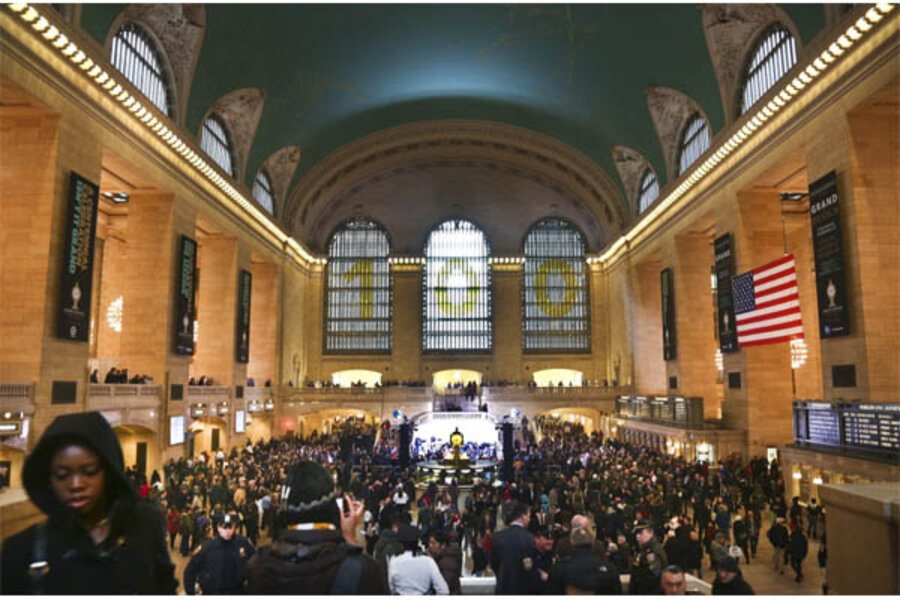Grand Central and our station in life
Loading...
How can I work the commemoration of the centennial of New York's Grand Central Terminal into a column that's supposed to be about language?
That's a question I've been noodling, or noodling over (note to self: check to see whether "noodling" in this sense can be used transitively) for the past several weeks, when I haven't been distracted by blizzards and budget meltdowns. The actual anniversary of the terminal's opening to the public was Feb. 2, but the special exhibition in Vanderbilt Hall runs into this month, and New York Times reporter Sam Roberts's new book, "Grand Central: How a Train Station Transformed America," will be around to savor for some time – along with any number of other books on this famed temple of transport.
Grand Central is the largest railroad terminal in the world, and one of the world's great public spaces. It was built to tame the chaos and truly life-threatening danger that railroads presented in the city at the turn of the 20th century. Old photographs taken before Midtown was as built up as it is today show sunlight pouring in unimpeded as through the rose windows of a cathedral, but with more luminosity. Art directors looking to suggest "the public square" for a book-jacket cover or a magazine essay illustration often turn to images of Grand Central.
The point I have to offer is less a linguistic issue to raise and more a copy editor's nitpick: Note that it's Grand Central Terminal, not Grand Central Station – however deeply the latter may have etched itself into collective thought.
There's a Grand Central station on the New York subway system, and a Grand Central Station, adjacent to the railroad terminal, that is a United States post office. A station is, etymologically, a stopping point along the way. But the Grand Central is a terminal, because it's an endpoint.
Station is rooted in the idea of "the place where one stands," according to the Online Etymology Dictionary, and that's what it meant when it came into English in the late 13th century. From that sense grew a metaphorical notion of one's "station in life," a usage that the Macmillan dictionary labels "old-fashioned" but one that will be familiar to fans of certain kinds of PBS or BBC period dramas. The sense of "stopping places along a route of pilgrimage" goes back to the late 14th century.
Station meaning "regular stopping place" goes back to 1797, when it applied to coaches; by 1830, it was being used with references to railroads, the hot new technology of the day.
Terminus came into English around 1550 to mean what it meant in the Latin from which it was borrowed: goal, end, final point. (Terminal, an adjective turned into a noun, came much later.)
"Terminus" was the name of a god in ancient Rome who presided over boundaries and landmarks. To those who follow big-city politics, with its endless battles over development versus historic preservation, Terminus sounds like a very contemporary deity.
He was the focus of an important festival, "Terminalia," held at the end of the old Roman year, on Feb. 23.
Terminus was applied to railroads to mean "the end of the line" around 1836 – which suggests about six years there during which engineers knew they were moving forward but weren't quite sure they'd gotten where they were going.
But when you come into Grand Central, you know you have arrived.







